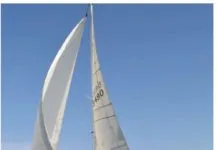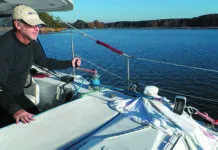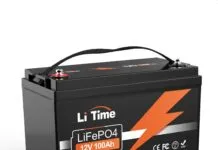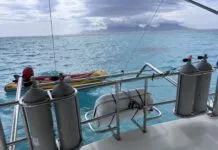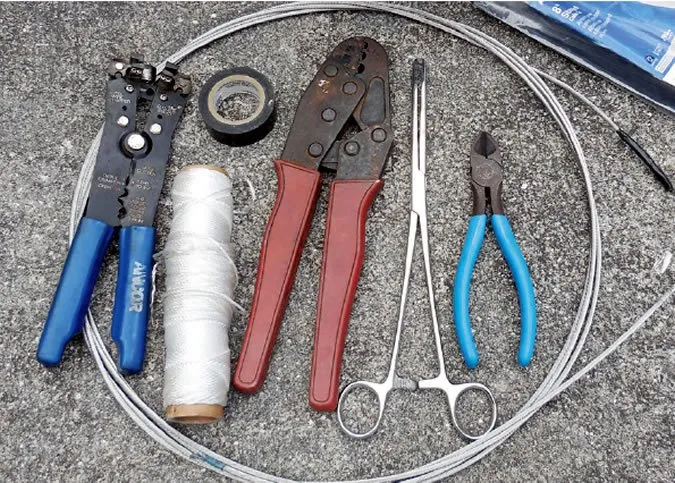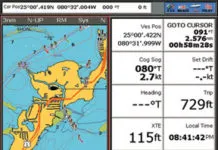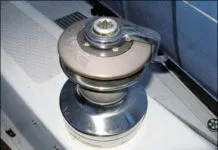Mailport: 08/09
As a new boat owner, I have no end of questions, but here’s a quickie: I have recently had my boat hauled and sanded to the gelcoat, and repainted with all the right stuff. (The bottom was coated with Interlux CA Bottomkote.) Now, how often should I have a diver clean the underside, bearing in mind I live in San Diego? The service providers have a vested interest in selling frequent cleans—one company running a special at the moment wants me to sign a contract for a bottom clean every three weeks, but that sounds way too often to me. I realize it may well vary with geography and ambient temperature, but there should be some kind of general rule of thumb, perhaps?
Feature-loaded High-end Marine Handheld VHF Radios
Practical Sailor tested eight high-end marine handheld VHFs from three manufacturers: Cobra, Standard Horizon, and Uniden. Among those tested were two updated Standard Horizon VHFs, the HX500S-LI and HX600S-LI, and three of the companys latest floating VHF radios, the HX750S, HX760S, and HX850S. From Uniden, testers evaluated the MHS450 and MHS550. They also tested the Cobra HH425 LI. These feature-rich handheld marine radios, priced from $130 to $350, were tested for transmitter power, frequency accuracy, frequency stability, receiver sensitivity, audio output, and audio quality. They also were submerged in fresh water, dropped from 4 feet onto concrete and batteries were left on for 15 hours to test battery life.
Marine Electronics: Practical Sailor Reviews New Raymarine A-series Chartplotter-sounder
Sailors looking for a chartplotter who tend to stray from the beaten path or those who spend a fair amount of time fishing may want to consider a combination chartplotter-fishfinder. Our last look at plotter-sounders named the Garmin 545s the Practical Sailor Best Choice for combination chartplotter sounders. This review compares the Garmin to the new Raymarine A50D. Testers looked at display unit features, plotter features, and sounder features. The Raymarine unit uses Navionics cartography and can interface with AIS devices.
Marine Handheld GPS Test Update
The Delorme Earthmate PN-40 is one of the newest additions to the handheld marine electronics market. Practical Sailor evaluated the rugged, palm-sized Earthmate using the same tests used in past GPS evaluations to see how it matched up against the Garmin GPSMap 76CSx, our top performer in past tests. Testers used the unit for multiple days and rated key functions, battery life, lighting, waterproof quality, cold starts in multiple locations, and visibility under different conditions.
Practical Sailor Tillerpilot Test: the Simrad TP10 and the Raymarine ST1000 Plus
Offshore sailor Skip Allan tested two entry-level tillerpilots, the Simrad TP10 and Raymarine ST1000, aboard his 27-foot sloop during last years Singlehanded Trans-Pac race. The autopilots were used during varying weather conditions and sea states, including gale conditions. The review considers characteristics of the Raymarine tillerpilot and Simrad tillerpilot, including price, power supply, drive thrust, installation ease, user friendliness, construction, and performance.
The Search for Reliable Hands-free Onboard Communication Systems
Being able to communicate with a hands-free communication device along the length of the deck allows crew to coordinate activities like anchoring, docking, and going up the mast. Practical Sailor testers experimented with two systems: Motorola SX800R two-way radios and Nautic Devices Yapalong 3000. Both the Motorola and the Yapalong comprise a cell-phone-sized transmitter/radio unit and a separate handset. We tested them during anchoring, masthead repairs, and docking. The products were used with their mated headsets in various weather and sea conditions, including light rain and spray. The Motorola unit also was tested with a compatible Fire Fox Sportsman Throat Mic.
New Air Breeze Wind Generator Field Tested
As sailors, wind energy is at the forefront of our lives. The Practical Sailor wind generator test in March 2007 included a prototype of the Air Breeze from Southwest Windpower. Last year, the company debuted the Air Breeze in the alternative energy market for recreational boaters; it is distributed through retail giant West Marine. Using the same criteria as our 2007 test, Practical Sailor tested the Air Breeze for several months under a variety of conditions, using it to charge the ships batteries aboard a Union 36. The wind generators body is cast aluminum, and its blades are made of glass-filled polypropylene. Testers found it quiet, easy to mount, and reasonably priced at $900.
Mailport: 05/09
In light of your recent letters on copper/epoxy antifouling bottom coatings, Id like to share my experience. Near the end of my Searunner trimaran boatbuilding project, I decided to apply a product known at the time as Copperpoxy. I applied the coating to all three hulls to about 20 mils thick, and then sanded this "orange peel" surface down to about 10 mils. I finished up with 220-grit sandpaper. In the end, it was beautiful. It was just like a perfectly smooth, new copper penny, and just a bit thicker than recommended. We started our cruising adventure in the foul waters of Beaufort, S.C. Very soon, I was doing a huge scrape job every week. The bottom was covered with grape-size barnacles. I noticed that the aft half of the main hull, the part with underwater metals, was fouling the worst. (I was changing zincs every week.) Two years later, in Pensacola, Fla., we decided to give up on this product and paint over it with Pettit Trinidad SR bottom paint. When doing the weeks-long prep for this painting, we could see that the skin of our epoxy/ply boat was electrically conductive and corroding all the way through in the entire area of the bonded shaft, strut, prop, gudgeons, and copper mast ground. We put on three coats of Trinidad, waited a few days, and splashed the boat. Within two weeks, the new paint had peeled off in the electrically active area. We re-hauled, stripped the paint in this area, and coated the problem Copperpoxy area with three coats of epoxy. After sanding and repainting, we set off for the Western Caribbean. Over the following six months, we noticed that even the epoxy would not stick to the Copperpoxy.
PS Advisor: DSC Group Identity Numbers
I’m a member of the Stonington Harbor Yacht Club in Stonington, Conn., and we need a better way to contact members on the water. We would like to use the full features of DSC (Digital Selective Calling) group calling for that purpose, but it is not clear to us what the best way is to obtain a group identity call number for DSC calls.
Next Best Thing
While world leaders and presumed financial wizards set to work trying to right the global economy with some very expensive bailers and sponges, Practical Sailor has taken the time this month to dig through our recent collection of Chandlery submissions to see if we can find anything more useful. Given sailors capacities for innovation (aka "jury rigging"), were holding out hope that the next great invention-the ultimate stimulus package-lies somewhere in our growing stockpile of Chandlery items.


